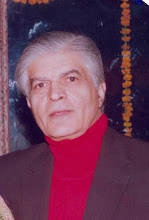
.
The Human Body
Cardiovascular Systems (CVS) (Part II)
The Thump and the Flow of Life
ARTERIES The delivery highways
-All the arteries of the body are branches which take off from the aorta..
-Healthy arteries have a smooth inner lining, soft wall with a layer of muscle c --The beat can be felt at the wrist easily compressed in all healthy arteries.
-In older person the walls of the arteries become thicker and harder.
-The inner lining can also get rough and uneven and at times this abnormality in the lining can block the flow of blood and form a clot at this site (thrombosis).
-The beat in the artery is a result of the pumping action of the heart and the elastic quality of the arteries.
-It can be measured by the use of blood pressure instrument.
-At each beat the arteries receive a new load of pumped blood.
-This is when the pressure is highest and this is also called systolic pressure.
-When the left ventricles relax the pressure is the lowest and this is called the diastolic pressure.
-The blood pressure is always reported in two figures the highest and the lowest (Normal 120/80 mm hg).
-The figures refer to the millimeters of mercury that rises in the blood pressure instrument with each beat of the heart.
-Pressure above 140 systolic and 90 diastolic is considered high and a person needs medical advice
-High blood pressure is called hypertension.
-It is caused by the thickening of the artery walls, which makes the flow in arteries less.
VEINS the return collecting highways
-The veins have thinner walls than the arteries.
-They have less muscle in their walls and less elastic tissue.
-This allows the veins to expand and hold a large quantity of blood at rest.
-The blood in the veins has less oxygen,
more waste products
-The pressure is much lower than in the arteries.
-The muscle contraction of the limbs in walking, and other activity, pumps blood in the veins back to the heart.
-The muscle contractions leading to expansion of the chest in breathing also sucks blood into the chest back into the heart.
-Blood pressure is lower in veins than it is in arteries.
-The walls of veins are thinner, weaker and less elastic than those of arteries.
-This makes it easier for leg muscle contraction to pump blood to the heart.
-The veins can collapse when empty, unlike arteries which never do.
CAPILLARIES The small sidewalks, footpaths, and tiny tracks joining the two highways (arteries and veins)
The smaller arteries become smaller channels called arterioles, they lead into the capillaries.
Capillaries are tubes with walls only one cell thick.
There are tiny holes (pores) through which water, oxygen, glucose, amino acids and proteins (nutrition) can pass out to the cells .
Similarly in the returning water from the cells there is CO2, Nitrogen and other breakdown products that can pass into the capillaries and enter the veins, on the way back to the heart.
Blood races through the arteries at 1 meter a second.
There is over 60,000km of capillary in the body.
Many capillaries are hundredth of a millimeter diameter only.
-The muscles of the blood vessel walls (arterioles) control the pressure of blood flow.
-They tighten and relax so that no matter how much blood is delivered by the main arteries, pressure in the capillaries is always right.
-It must be strong enough to push oxygen to every cell, but not so strong as to burst the capillaries.
Any question should be address to: consensusdc@yahoo.co.in you will receive further information regarding your question.





A contented mind is a perpetual feast. ....................................................
ReplyDelete